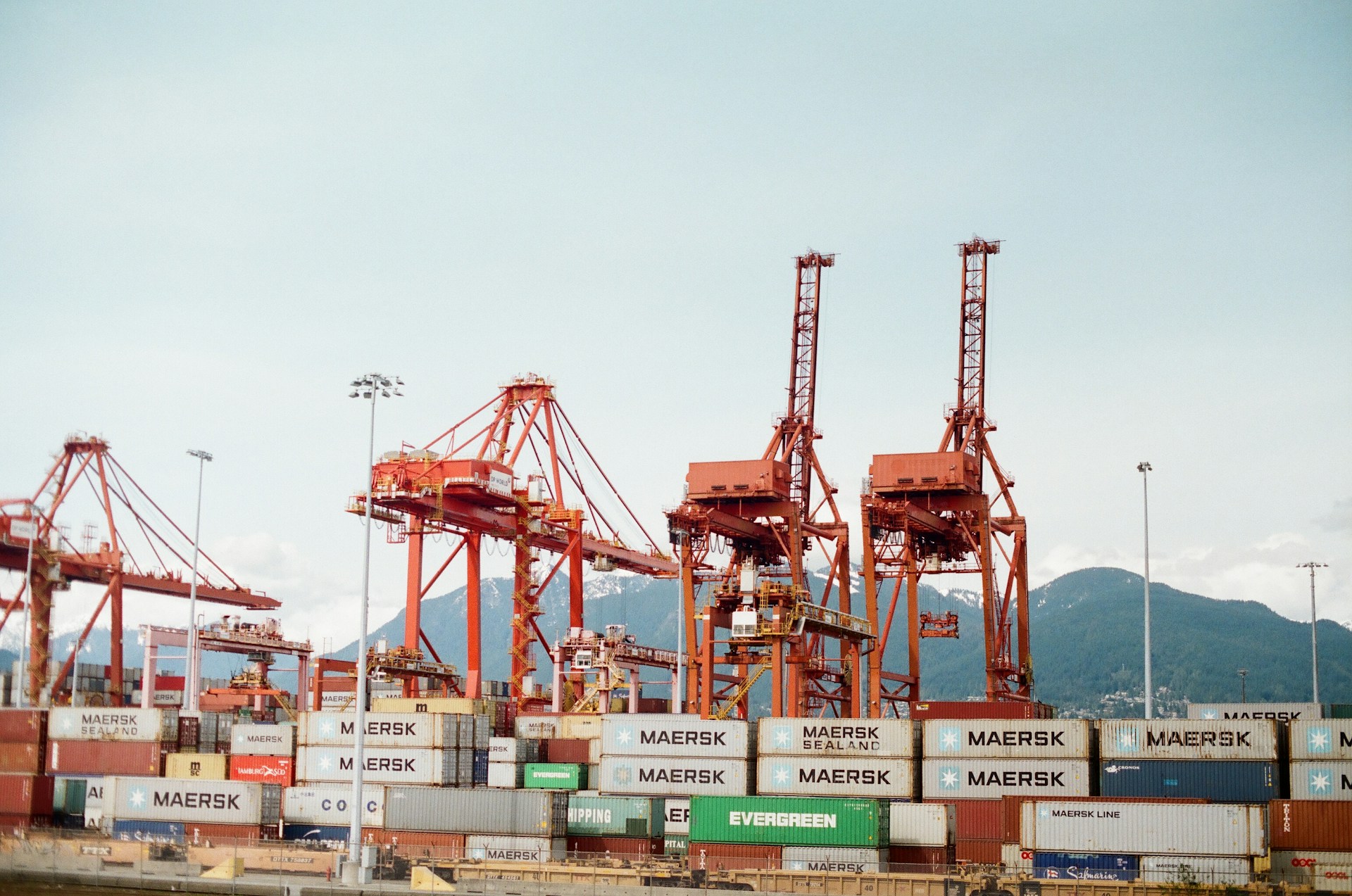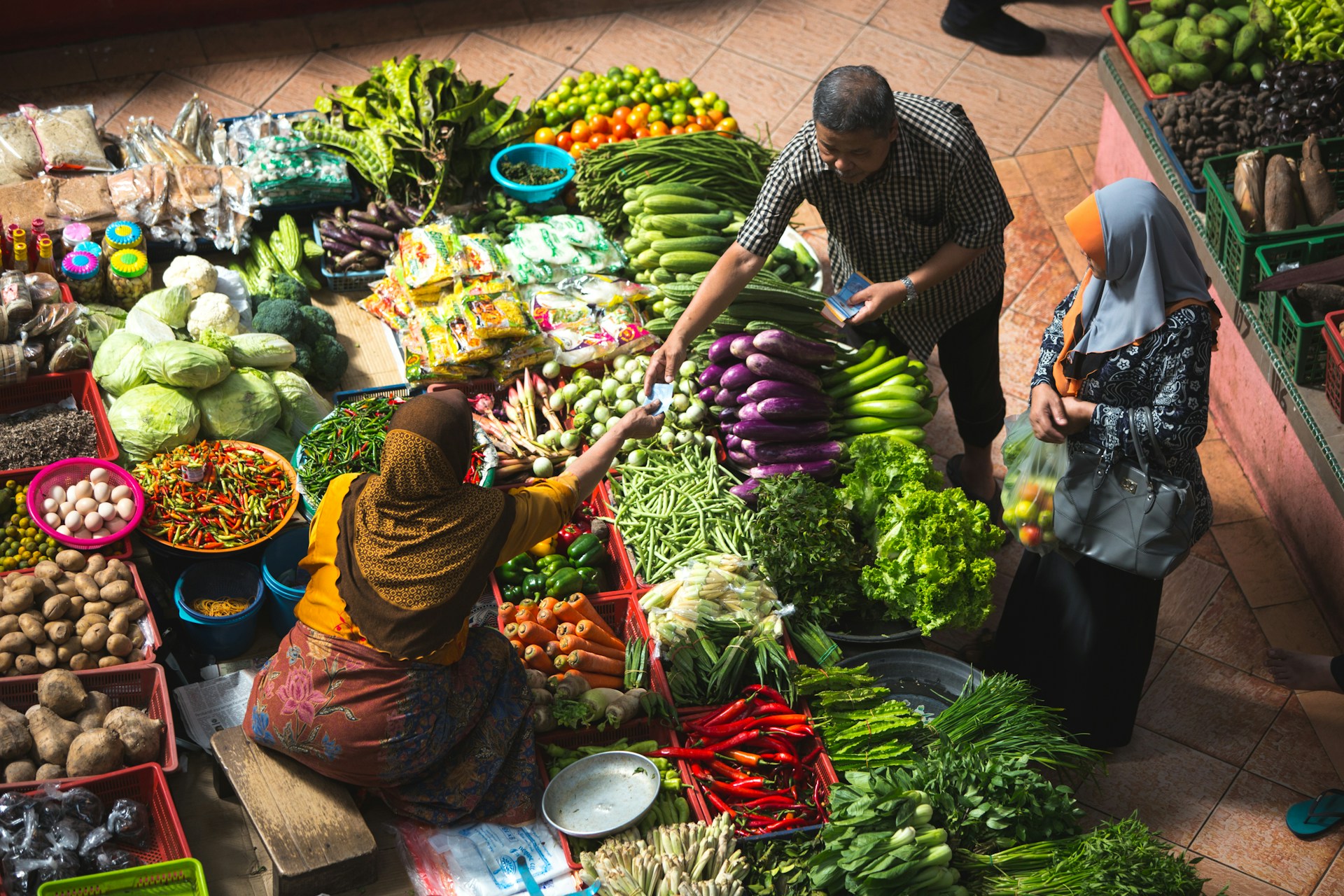In the complex world of agriculture, the influence of global supply chain trends cannot be overemphasized.
For those engaged in the packaging of fruits and vegetables, these trends have a significant impact on everyday operations and long-term business strategies.
As our understanding of these intricate global systems grows, we must scrutinize the shifts that affect produce packers.
Our aim is to delve into some of the prevailing trends and contextualize their effects on this pivotal sector.
The intricacies of modern supply chains present both challenges and opportunities.
This analysis provides valuable insights to navigate the evolving landscape.
Contents
Global Supply Chain Trends Affecting Produce Packers
1. Increased demand for sustainable packaging
The rise of environmental awareness has significantly increased the demand for sustainable packaging.
Many consumers are now prioritizing products with environmentally friendly packaging as they aim to reduce their impact on the planet.
The increased understanding of the detrimental effects of plastic waste on marine life and the wider ecosystem has intensified the need for sustainable packaging solutions within the agribusiness supply chain.
Produce packers globally are facing the challenge to adapt to this shift in customer preference and invest in eco-friendly packaging options.
Major grocers and food retailers, facing pressure from consumers, are also making pledges to cut down on plastic waste, promising increased utilization of green packaging alternatives.
This consumer-led demand for sustainable packaging is no longer just a trend, but instead it’s becoming a new standard that is reshaping global supply chains.
Many packaging firms are now investing in research and development to create innovative and environmentally friendly packaging options.
These sustainability initiatives are not only meeting the increasing demand but are also presenting companies with an opportunity to rebrand and market their commitment to the environment.
The move towards eco-friendly packaging goes beyond just using biodegradable materials; it also involves reducing packaging quantities and weight to minimize transport emissions.
Implementing more sustainable packaging is not as simple as it sounds; there are significant hurdles like costs, regulation, feasibility and people’s acceptance of new packaging formats.
Sustainable packaging is typically pricier due to the higher costs of raw materials and manufacturing processes.
However, the long-term benefits of sustainable packaging such as potential reduced packaging waste costs, improved brand image and customer loyalty can outweigh these initial costs.
Regulation is also a hurdle for sustainable packaging, as many countries have different standards and regulations around what is deemed environmentally friendly.
The push towards greener packaging alternatives in the produce packing industry is likely to reshape the global supply chains and how agribusiness is conducted.
The increased demand for sustainable packaging in the agribusiness sector is a clear reflection of emerging consumer behaviors and societal expectations around environmental responsibility.
As more corporations shift towards providing responsible packaging solutions, the drive towards sustainably packaged produce is set to become even stronger.
2. Blockchain Technology for Traceability
Emerging technology of blockchain offers unprecedented solutions and opportunities for the global supply chain, particularly for produce packers.
One of the predominant challenges packers face is managing, recording, and verifying the journey of their products from field to retail.
This is particularly crucial as consumers increasingly demand transparency in their food’s origin, cultivation practices, and delivery conditions.
Blockchain technology is stepping in to fill that demanding gap with its capabilities of a secure, trustworthy, and immutable shared ledger that records every point of a product’s journey.
The technology ensures every temporary custody holder and physical location the product goes through is recorded in a transaction block, providing an intricate detailed traceability trail.
With blockchain, traceability, and verification processes become streamlined, secure and virtually tamper-proof, offering peace of mind to both packers and consumers.
Implementing blockchain technology in supply chain management not only enhances traceability but has demonstrated remarkable potential to enhance operational efficiencies and dispute resolution.
Packers can leverage these capabilities to significantly optimize their resource allocation, reduce wastage, and enhance productivity.
Moreover, blockchain’s inherent security and cryptographic nature can tackle counterfeiting issues which are a major concern in the agribusiness sector.
Through unique product tagging and assigning to the blockchain, packers can verify product authenticity at any time and place.
The use of blockchain also supports enhanced audit readiness for packers, as all product related data is recorded in a decentralized, verifiable manner, reducing the time, cost and complexities inherent in traditional audit processes.
While implementing blockchain technology represents a significant change and requires upfront investment, it holds the potential to redefine packers’ interactions with the supply chain, offering them an edge over competitors in an increasingly saturated market.
Furthermore, with the rise in global standardization and policy developments like the Food Safety Modernization Act (FSMA) and General Data Protection Regulation (GDPR), blockchain’s capability to aid in seamless regulatory compliance could prove indispensable for packers.
It’s also imperative to note that adopting blockchain technology is not without its challenges. These include technological complexities, initial costs, potential scalability issues, and a need for widespread acceptance for the technology to fully benefit the supply chain.
Overall, blockchain technology represents a revolutionary advancement in supply chain management that could significantly streamline and secure produce packers’ operations, and indeed the broader agribusiness industry, if the challenges are correctly addressed and overcome.
3. AI-Powered Logistics Management
The field of vegetables and fruits packing is witnessing a massive transformation driven by the integration of artificial intelligence in logistics and supply chain management.
This innovation is proving to be essential, especially in addressing the increasingly complex global supply chain challenges.
The use of AI in this sector is opening up new approaches to manage and optimize transport and warehouse operations, thereby improving the overall efficiency of the supply chain.
AI-based software and systems are capable of predicting potential disruptions in the supply chain and adjusting operations accordingly to ensure the seamless flow of goods.
They can react to real-time data and make instant decisions, considerably reducing risks and mitigating losses.
Automation, an essential aspect of AI, is optimizing warehouse operations, reducing labor costs and decreasing the possibility of human error.
Also, AI-powered delivery systems such as drones and self-driving vehicles are playing a pivotal role in ensuring fast and efficient delivery of packed produce.
As a further advantage, these technologies reduce the dependence on human labor, hence minimizing the effect of labor shortages on the supply chain.
AI’s capability to streamline and modernize logistics processes, handle large datasets, provide real-time tracking and make accurate predictions is transforming the supply chain in the agribusiness.
Moreover, AI can use machine learning algorithms to forecast demand and manage inventory accordingly, preventing the wastage of perishable produce due to overstocking.
AI can analyze historical data to predict future sales trends based on numerous factors such as season, market demand, price fluctuations, and more.
This anticipatory planning enables businesses to have the right quantity of produce at the right time, enabling them to meet customer demand without unnecessary stockpiling or shortages.
Furthermore, the adaptive nature of AI algorithms enables them to learn from their mistakes and continually improve their forecasting accuracy over time.
This sophistication of AI systems is driving down the cost, improving delivery times and enhancing customer satisfaction in the produce packing sector.
For these reasons, the adoption and integration of AI in logistics management is becoming an imperative for businesses in this sector desiring to maintain a competitive edge in the global supply chain.
In view of these significant advantages, it’s evident that AI is set to play a crucial role in shaping the future of the global supply chain in the agribusiness.
4. Rising Costs of Raw Materials
The rising cost of raw materials is a significant trend affecting the fruit packing industry.
This increase in prices is driven by a variety of factors such as geographical issues, weather conditions, climate change, labor costs, transportation costs, and supply-demand dynamics.
There is a direct impact of the rise in raw material costs on the operational costs of produce packers, thereby influencing their profitability and survival.
With higher material costs, the packaging costs correspondingly increase, which typically leads to price escalation of the final product.
This elevated cost is often passed on to consumers, making the fruits more expensive, which could eventually decrease demand.
Ultimately, the rising costs of raw materials coul potentially disrupt the supply chain of the produce packing industry, leading to further economic implications.
However, it is worth noting that these rising costs are not uniform across all types of raw materials used in the industry.
Some materials, such as plastic, paper, and cardboard, have seen significant price hikes, while others like steel and aluminum have been less volatile.
Moreover, the availability of certain raw materials also plays a crucial role in determining their costs.
Scarcity or limited availability of a particular material can also trigger a price increase.
Given these factors, produce packers are compelled to look for alternatives or modify their packaging techniques to maintain their profitability.
Consequently, there is an emerging trend towards recyclability and sustainability in packaging materials.
Packers are increasingly turning towards ecologically friendly materials like paper, glass, and bioplastics that are comparatively less expensive and more available.
In turn, this switch has the potential to deliver multiple benefits; not only can it help mitigate the rising costs of some raw materials, but it can also aid in enhancing the environmental reputation of the packers.
Therefore, the rising costs of raw materials, despite presenting challenges, are inspiring innovative and sustainable ways of managing packaging in the fruit packing industry.
This trend underscores the need for resilience and adaptability in the face of changing global supply chain dynamics.
5. The accelerating e-commerce in agribusiness
The world has experienced an unprecedented surge in e-commerce activities in recent years, and the agribusiness sector is no exception.
The COVID-19 pandemic has sped up this shift to online buying and selling.
As a result, agribusiness companies have had to adapt rapidly to meet the changing demands of consumers and the logistical challenges that come with e-commerce.
E-commerce offers many advantages for agribusiness, including a wider reach of potential customers and streamlined operations.
However, it also presents several challenges for producers, such as the need for robust logistics systems, secure payment platforms, and the capacity to handle high volumes of sales and inventory.
Despite these challenges, the rise of e-commerce in agribusiness is an undeniable trend that is expected to continue in the coming years.
For produce packers, this trend has significant implications for their operations and supply chain strategies.
As the e-commerce market grows, produce packers will need to improve their logistics systems, incorporate new technologies, and adapt their packaging strategies to ensure freshness and quality during transit.
One of the key challenges for produce packers in the e-commerce era is how to maintain the freshness of products during transit.
With consumers demanding high quality, fresh produce, this is a challenge that cannot be overlooked.
To meet this demand, produce packers are relying more on innovative packaging solutions that preserve the life of the produce, reduce waste, and are eco-friendly.
Moreover, with the increase in e-commerce, there is a rising demand for transparency and traceability in the agribusiness supply chain.
Consumers want to know where their food comes from, how it was grown, and how it was handled throughout the supply chain.
As a result, produce packers may also need to invest in technologies such as blockchain to provide real-time tracking and ensure the integrity of their supply chain.
The increasing role of e-commerce in agribusiness shows how digital transformation is affecting all sectors of the economy.
Ultimately, produce packers who are able to adapt to these changes will be the ones who succeed in the market.
The Bottom Line
Sustainable packaging is becoming an increasingly important consideration for businesses, driven by mounting consumer awareness and demand for environmentally friendly products.
Blockchain technology is stepping in to enhance traceability and transparency in supply chains.
Meanwhile, AI-powered logistics management is unlocking efficiencies, optimising processes, and reducing waste.
However, the rising cost of raw materials remains a persistent challenge that must be expertly navigated.
The rapid expansion of e-commerce in agribusiness further adds to the mix, promising opportunities for growth but also posing logistical hurdles.
As these trends continue to evolve and impact businesses, opportunities exist for those that are able to adapt, innovate and capitalize on them.




